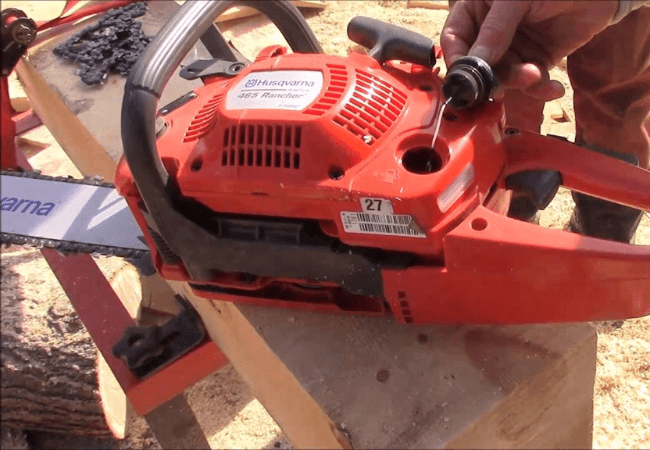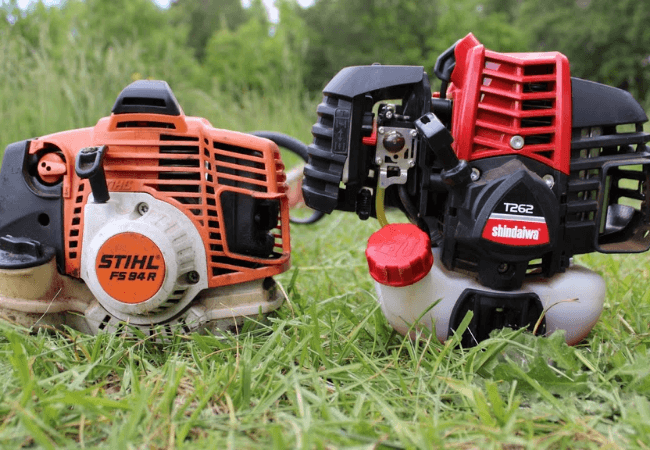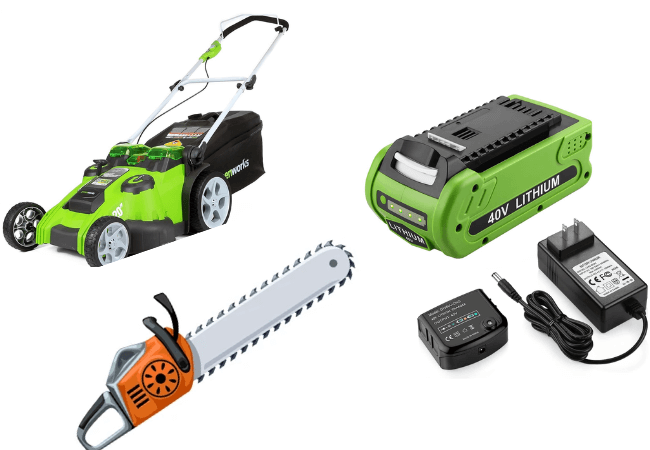In the window washing, power line repair, and arborist sectors, tree gaffs and pole gaffs are indispensable.
They are used to access high locations for maintenance and other duties by climbing trees and poles.
Although tree gaffs and pole gaffs have similar functions, they differ significantly and are each better suited for particular uses.
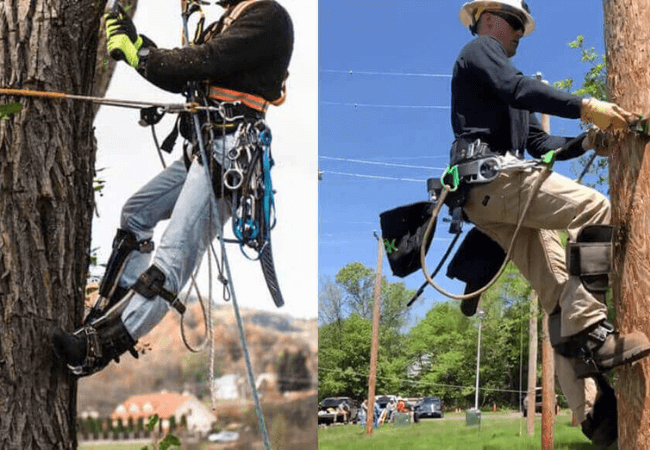
Specifically built for climbing trees, tree gaffs are often composed of metal or a material mix of metal and plastic.
They have spikes or hooks that hold the tree trunk as the climber ascends and are fastened to a climbing harness.
For arborists who need to reach trees for trimming, upkeep, or removal, tree gaffs are a great option. They offer stability and a firm grasp when climbing and working in the tree.
On the other side, pole gaffs are used to scale utility poles and other objects. Typically constructed of metal, they include hooks or spikes that connect to a climbing belt or harness.
Power line technicians and window cleaners who need to reach poles or tall buildings for maintenance or cleaning chores frequently utilise pole gaffs.
They are perfect for this kind of climbing since they are made to grab a pole’s smooth, cylindrical surface.
In tree care, window cleaning, and power line maintenance businesses, tree gaffs and pole gaffs play crucial roles.
Each gaff has advantages and disadvantages; the best depends on the application and user’s preferences.
Proper gaffs are essential for safety and effectiveness while working at heights, whether you’re an arborist scaling trees or a power line technician working on utility poles.
Materials used for Tree Gaffs and Pole Gaffs:
The strength, longevity, and general performance of tree gaffs and pole gaffs are significantly influenced by the materials used to make them. Metal and plastic are the materials most frequently utilised to create gaffs.
Typically, steel, aluminium, or a mix of the two materials is used to create metal gaffs. Steel gaffs are renowned for being strong and long-lasting, which makes them perfect for heavy-duty applications.
Although lighter and more pleasant to wear, aluminium gaffs fall short of steel gaffs in strength. Arborists who must climb trees for extended periods frequently use aluminium gaffs because they lessen fatigue and facilitate work in the tree.
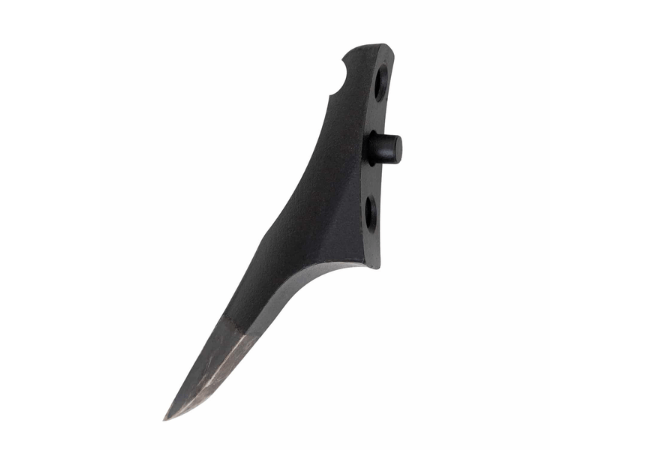
Material such as polycarbonate and polypropylene is used to make plastic gaffs. These materials are lightweight, flexible, and simple to form into the proper shape.
Plastic gaffs are a standard option for beginning climbers since they are also reasonably priced.
On the other hand, plastic gaffs are less robust than metal gaffs and might not be appropriate for heavy-duty applications.
The spikes or hooks used to secure the gaffs to the tree or pole are equally crucial to how well they work.
The spikes are often composed of tungsten carbide or hardened steel intended to hold the tree or pole firmly.
It’s essential to select spikes suitable for the particular purpose since the sort of spikes used might determine how well the gaffs work.
The strength, longevity, and performance of tree gaffs and pole gaffs are greatly influenced by the materials used to make them.
Whether you select metal or plastic gaffs, it’s critical to get high-quality components suitable for your requirements.
The exact use, individual taste, and the price will all play a significant role in the decision between metal and plastic gaffs.
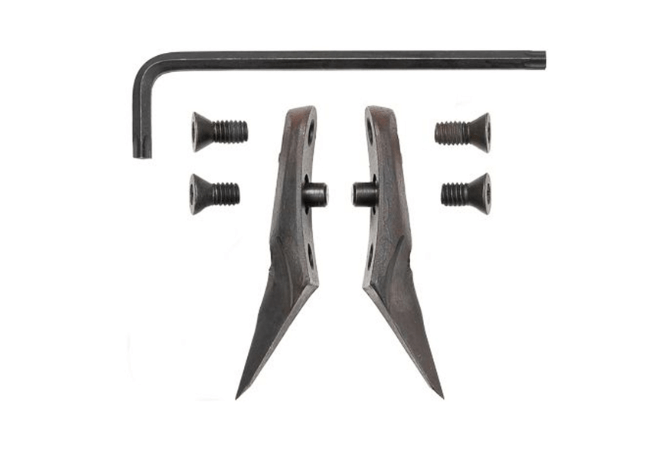
Safety Features of Tree Gaffs and Pole Gaffs:
The significance of safety must be balanced while operating at heights. The purpose of tree gaffs and pole gaffs is to offer a firm grasp and stability while climbing.
However, picking gaffs with the proper safety features is crucial to safeguard the user.
The strength and stability of tree and pole gaffs are one of the most crucial safety characteristics. The gaffs must be strong enough to support the user’s weight and endure the pressures involved in climbing.
Because of this, it’s crucial to select gaffs made of sturdy materials like steel or aluminium.
Additionally, the hooks or spikes used to hold the tree or pole must be able to pierce the tree or pole’s surface securely and be strong enough to support the person.
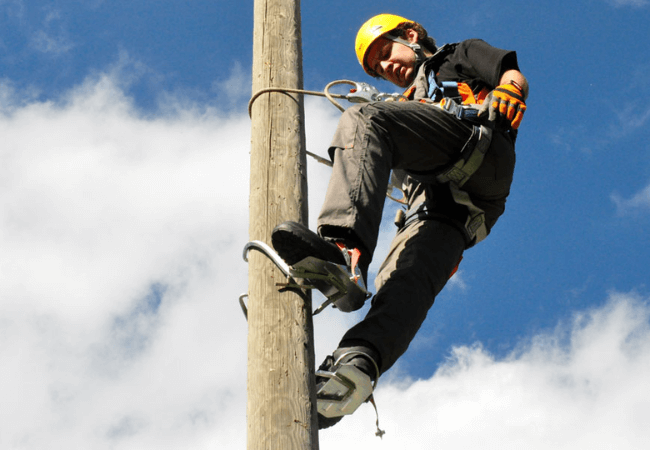
The way the gaffs are made is another important safety aspect. The gaffs must be ergonomically created to fit the user’s feet properly and offer the most significant amount of grip when climbing.
A non-slip surface should be there as well to avoid slipping when climbing.
Another crucial safety component is the mechanism used to link the gaffs to the climbing harness or belt.
The attachment mechanism must be reliable and robust enough to resist the pressures that climbers experience.
Selecting a method that is simple to operate and permits rapid release in an emergency is crucial.
In conclusion, tree gaffs and pole gaffs’ safety characteristics are essential for keeping climbers safe.
Gaffs must have a sturdy and robust design, a comfortable fit, and a reliable attaching method.
Depending on the application and the user’s requirements, the choice of gaffs will vary, but safety must always come first.
Choosing the Right Tree Gaffs and Pole Gaffs for the Job:
The correct gaffs must be selected since tree gaffs, and pole gaffs come in various sizes, forms, and materials.
The selection of gaffs will depend on the particular application and the user’s demands, but there are several things to consider.
The sort of climbing that will be done is the first element. For instance, tree surgeons who need to undertake heavy-duty work could prefer stronger gaffs made of steel, while arborists who must climb trees for lengthy periods might prefer lighter gaffs made of aluminium.
The size of the tree or pole that will be climbed should be considered the second factor. Gaffs come in various sizes, and picking the right size for the tree or pole you’re climbing is essential. For instance, thinner trees work well with smaller gaffs, whereas thicker trees work better with larger gaffs.
The kind of spikes or hooks used to hold onto the tree or pole is the third thing to consider. Different types of spikes or hooks are devised for different surfaces, such as rough bark, smooth bark, or metal poles. They select spikes or hooks that are suitable for the surface being climbed.
Finally, the user’s safety and comfort must be considered while selecting gaffs. To prevent slippage when climbing, the gaffs must have a non-slip surface and fit the user’s feet properly.
The gaffs must also feature a safe attachment method that enables rapid release in an emergency.
To ensure the user’s comfort and safety, selecting the appropriate tree gaffs and pole gaffs for the task is crucial. However, it’s crucial to consider aspects like the style of climbing, the size of the tree or pole, the kind of spikes or hooks, and the user’s comfort and safety. The choice of gaffs will depend on the individual application and the user’s demands.
Tree gaffs vs Pole gaffs! My experience!
Conclusion
Tree services, tree cutters, and utility workers must use poles and tree gaffs when operating at heights.
The sort of climbing, the size of the tree or pole, the kind of spikes or hooks, and the user’s comfort and safety are all important considerations when selecting gaffs.
To safeguard the user when climbing, safety elements, including strength, stability, ergonomic design, and a secure attachment mechanism, are essential.
Additionally, using the proper gaffs for the task will guarantee optimal comfort, safety, and efficiency while working at heights.
It’s crucial to put safety first and select gaffs that adhere to the applicable safety regulations.

